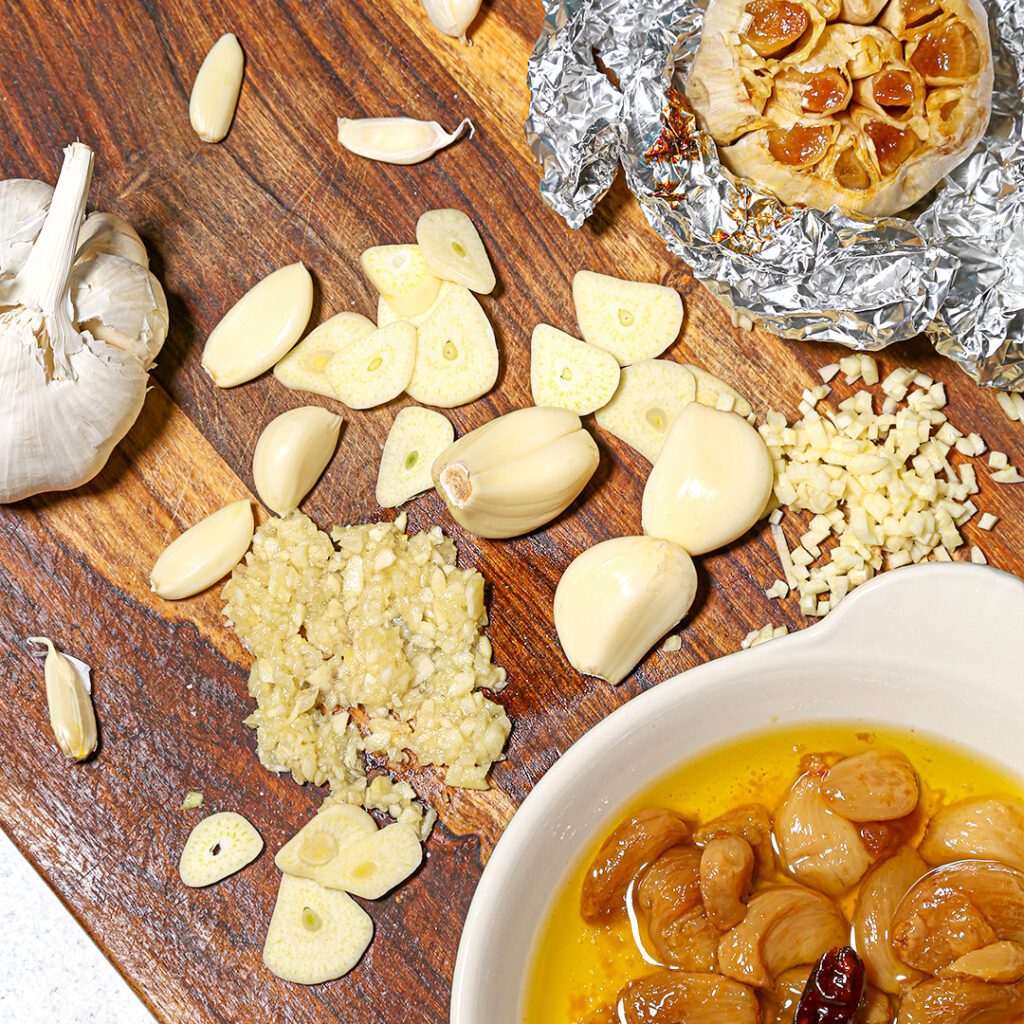
Let’s talk about garlic, the acclaimed workhorse of any kitchen. Garlic deserves all of the attention for just how versatile it really is—maybe even more so than its fellow allium siblings like onions, ramps, and scallions (which you can get to know in our Allium Guide here). Its uses span across flavor profiles and preparation styles galore, and a small pinch punches far beyond its weight in its ability to add depth to savory dishes (and occasionally, to sweeter ones, too).
Each of the various preparation methods for garlic all bring out a variety of intensity and flavors, so we’ve recapped some of the most common ones to give you a playbook on how and when to use them.
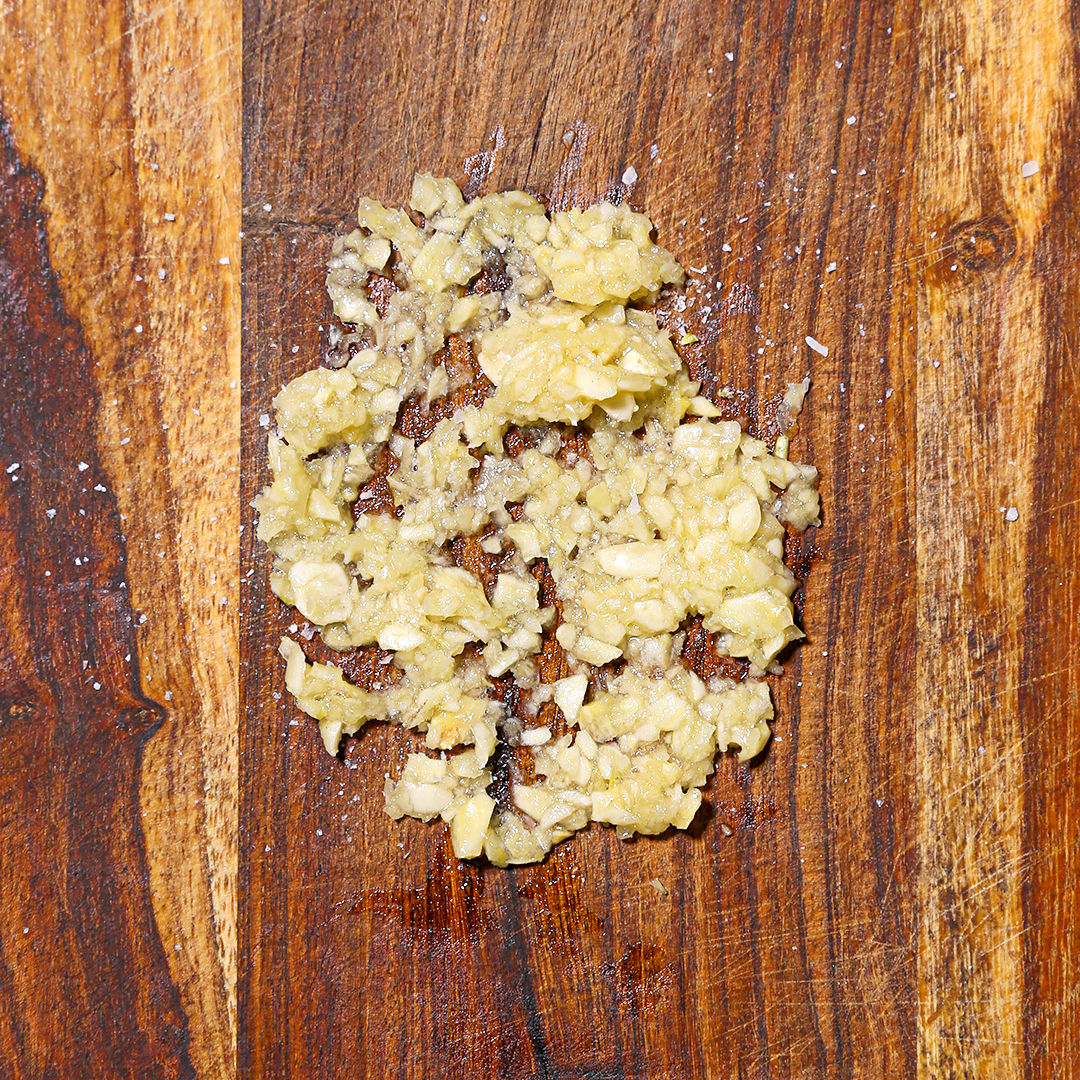
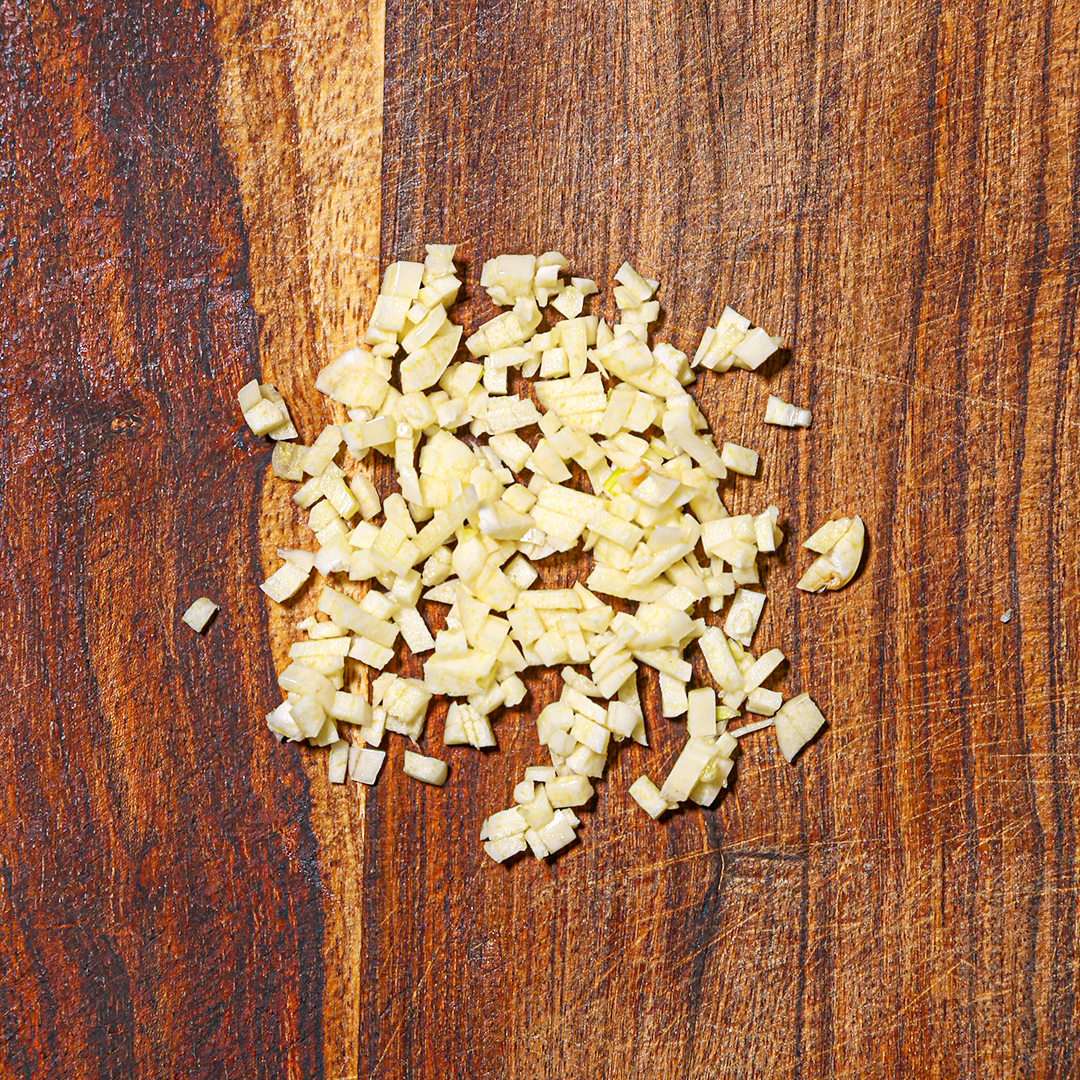

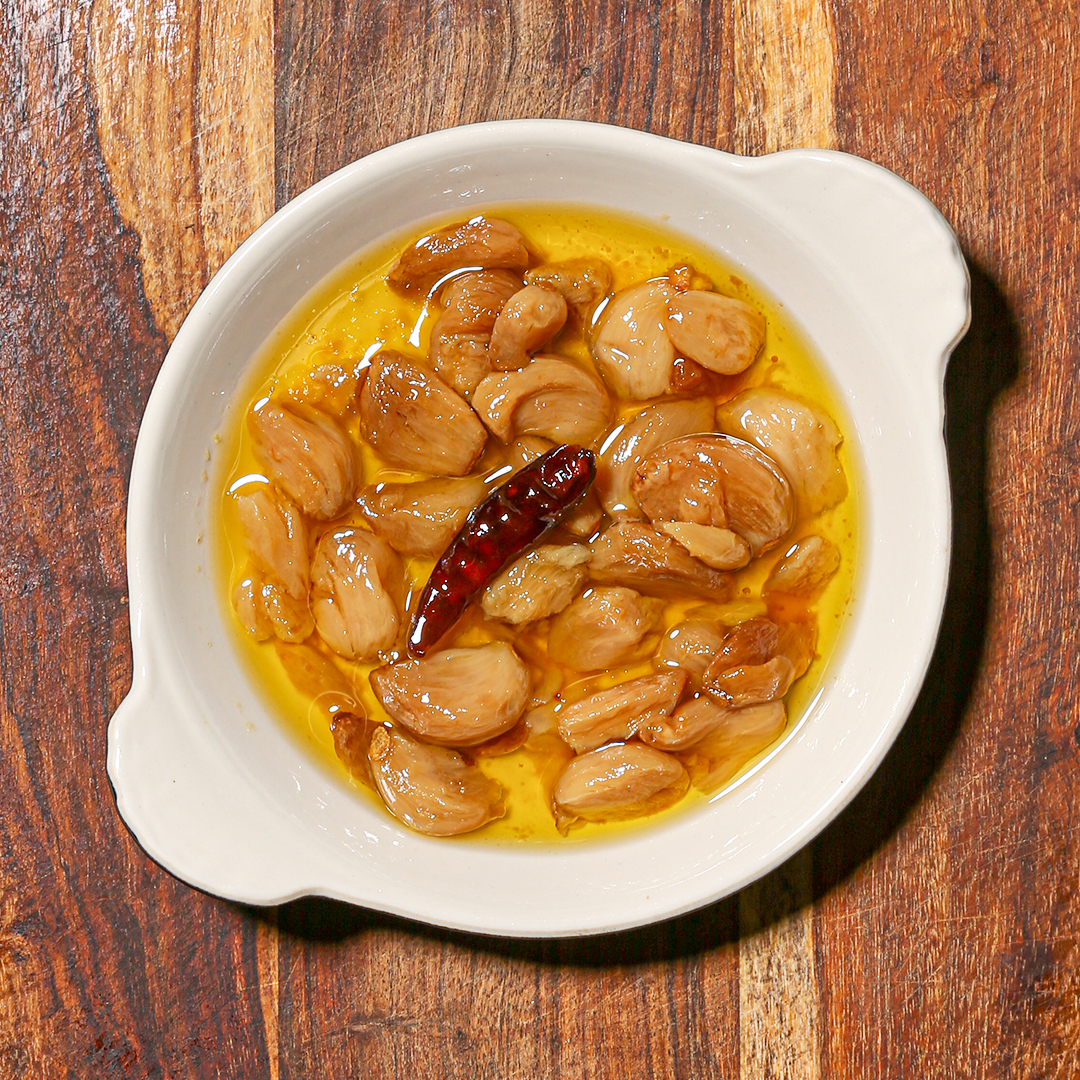
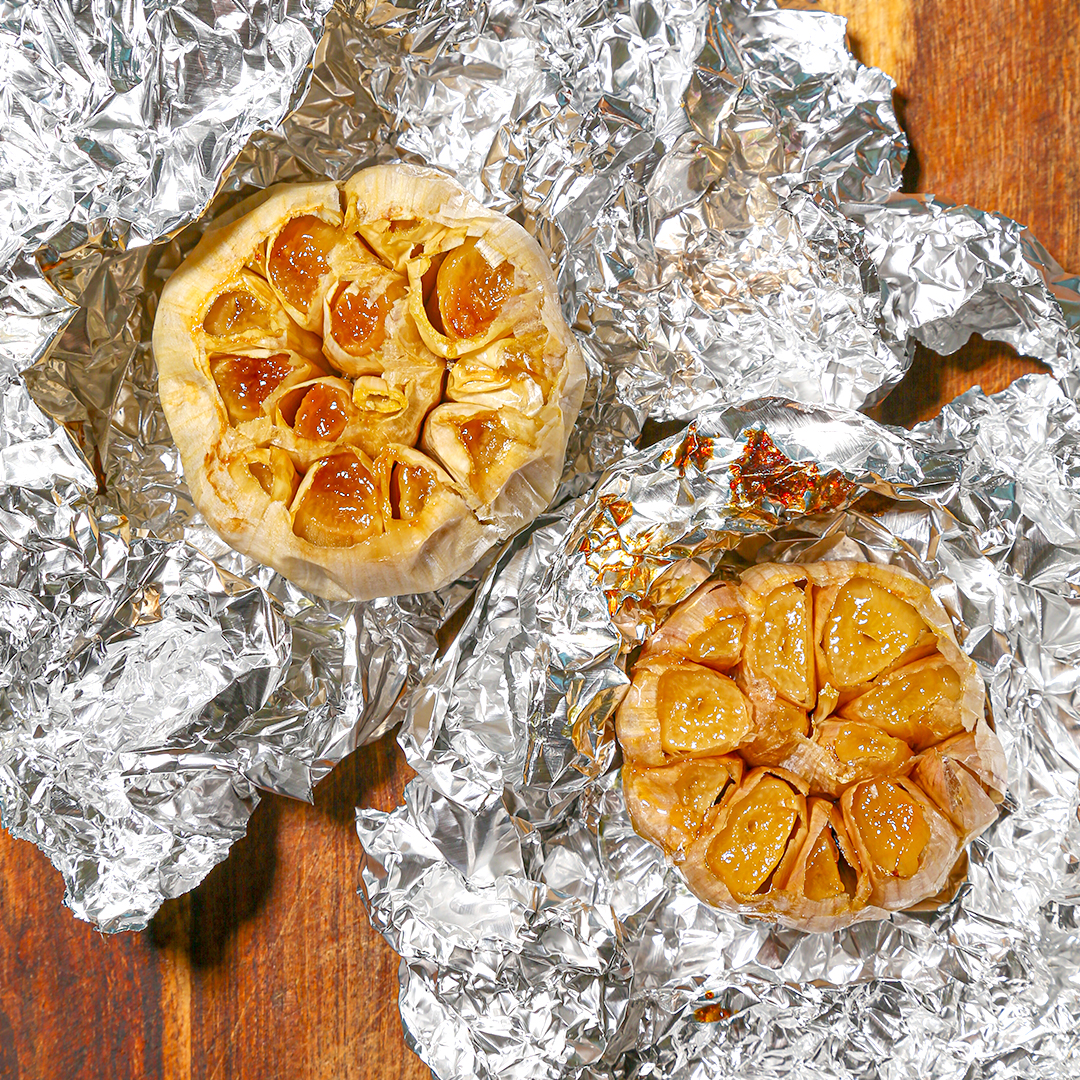
Garlic Paste
What is garlic paste?
Garlic paste provides a handy cooking shortcut, especially for those who dislike peeling and preparing cloves on a per-meal basis. It’s essentially what it sounds like: whole garlic cloves that have been blended with olive oil to achieve a mashed consistency.
How do I make garlic paste?
While you can find it pre-made, garlic paste is easy to whip up at home with a little advance prep and planning. After peeling a pile of garlic cloves, simply toss ‘em in a blender or food processor with a glug of olive oil and give it a quick blitz. Transfer to an airtight container and store in the fridge for up to a week, or dole out in an ice cube tray to freeze for up to three months.
When should I be using garlic paste?
Because of its even texture, garlic paste is superb for adding uniform, savory flavor throughout whatever dish it’s added to. We find it best lends itself for coating veggies before popping them in the oven to roast, since the garlic paste and veggies almost become one as flavors fuse in the oven. A good rule of thumb is to use 1 teaspoon of garlic paste for every clove your recipe calls for.

Try using garlic paste in this Curry-Roasted Whole Cauliflower.
Minced Garlic
When should I be using minced garlic?
Minced, or finely chopped, garlic is a default for when you want garlic to both add a substantial flavor boost while also blending in seamlessly (for cases in which biting down on a large garlic chunk might not be the most pleasant experience). By creating ample surface area for oils to release, mincing is great not just for cooked dishes, but for infusing flavor into dressings and marinades as well.

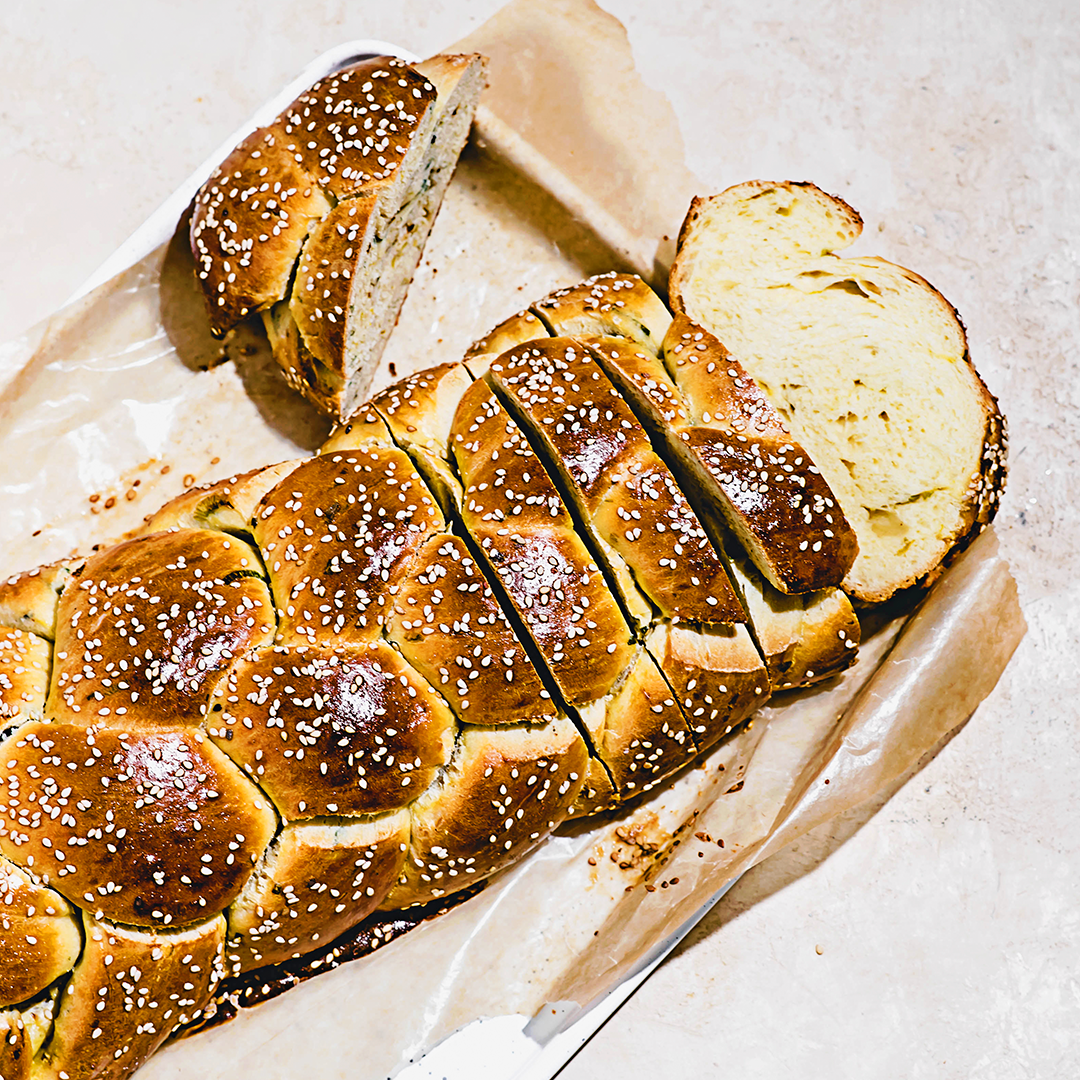
Try using minced garlic in this Garlic and Leek Braided Challah or try using minced garlic in these Sesame, Ginger, and Garlic Peanut Noodles.
Garlic Confit
What is garlic confit?
To confit is to slow cook something in a fat—in this case, oil—until it’s rich, yet mellow, in flavor and incredibly tender. Our favorite way for how to confit garlic is incredibly low-effort and involves a two-hour stint in the oven with the option to add herbs, too. We promise it’s worth the wait.
When should I be using garlic confit?
Just as garlic paste is great for adding to dishes before or during cooking, garlic confit’s silky-smooth texture and deep, almost-caramelized flavor makes it an ideal finishing touch for whisking into salad dressings, stirring into mashed potatoes or hummus, or simply spreading over toast.
Roasted Garlic
What is roasted garlic?
Compared to garlic confit, roasting garlic takes place at a faster pace in higher temps and with less added fats or oils. You can also roast garlic without peeling it at all—simply sliver off the wispy, papery peak of the bulb to expose the tops of the cloves within.
When should I be using roasted garlic?
Roasting mellows out garlic’s sharper, more pungent notes, so it’s ideal for cases in which its sweeter, slightly nutty notes complement the dish at hand, such as in tossed pastas, as a pizza topping, or spread over burgers and sandwiches.
Raw Garlic
When should I be using garlic raw?
Raw garlic in various forms—minced, sliced, or whole—is a great asset to homemade sauces, condiments, and dressings. Why? When you opt to add it when a dish is still cooking rather than (or in addition to) as a garnish, the raw garlic in the sauce cooks up, too, boosting the dish by unlocking even deeper flavor.
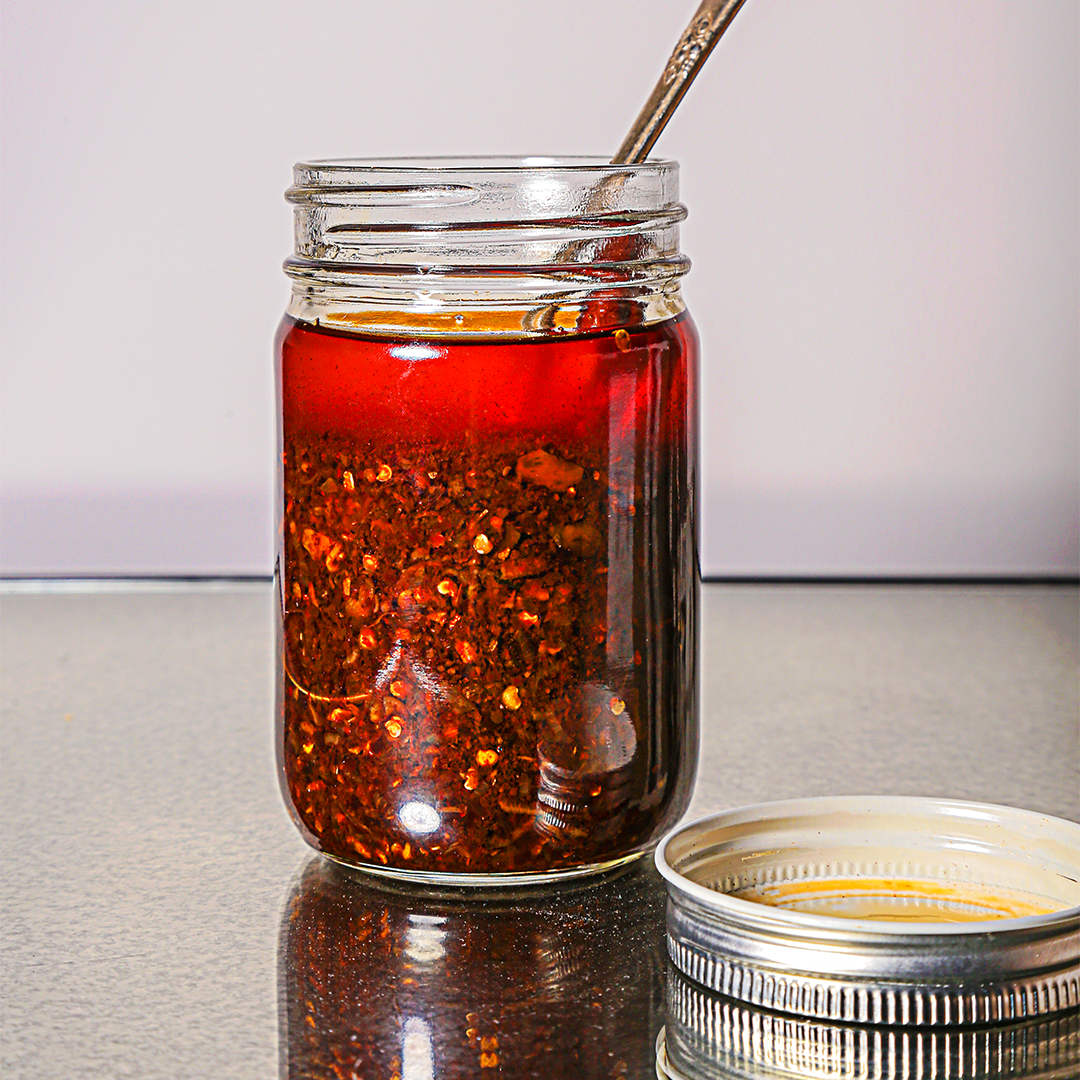
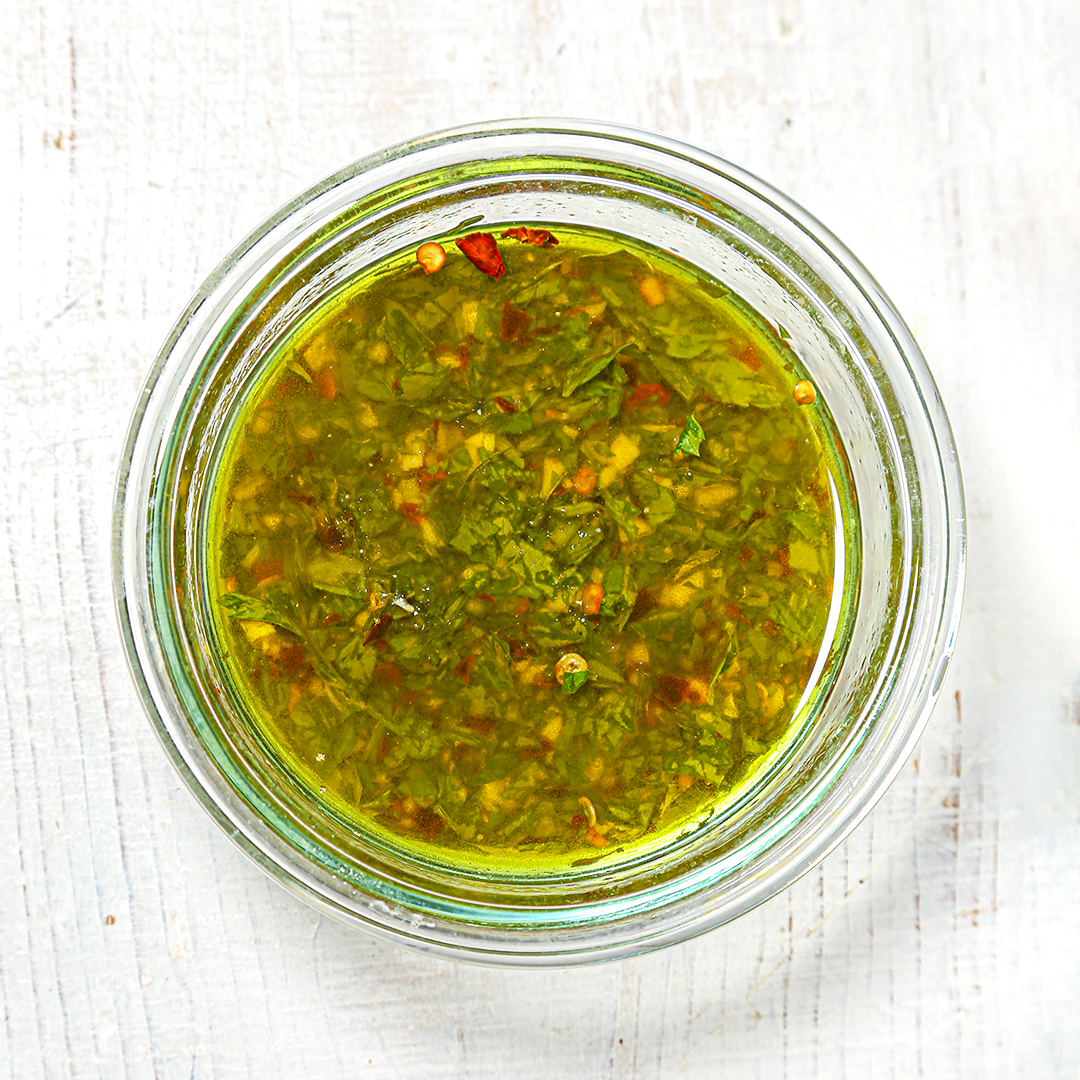
Try using raw garlic in this versatile, drizzle-over-everything chili garlic crisp or try using raw garlic in this bright and herby chimichurri sauce.
Whole Garlic
When should I be using whole cloves of garlic?
When a recipe calls for grated garlic, as this Easy, No-Cook Tomato Sauce does, you’ll want to reach for a whole, raw, and fully unpeeled clove. A tub of pre-peeled garlic to have at the ready isn’t hard to come by, but this can often lead to more food waste if it goes unused. A quick action to take when you find 5-10 free minutes is to peel a small handful of cloves—you can stash ‘em in the fridge for having at the ready, or drop ‘em into olive oil for a mild infusion.
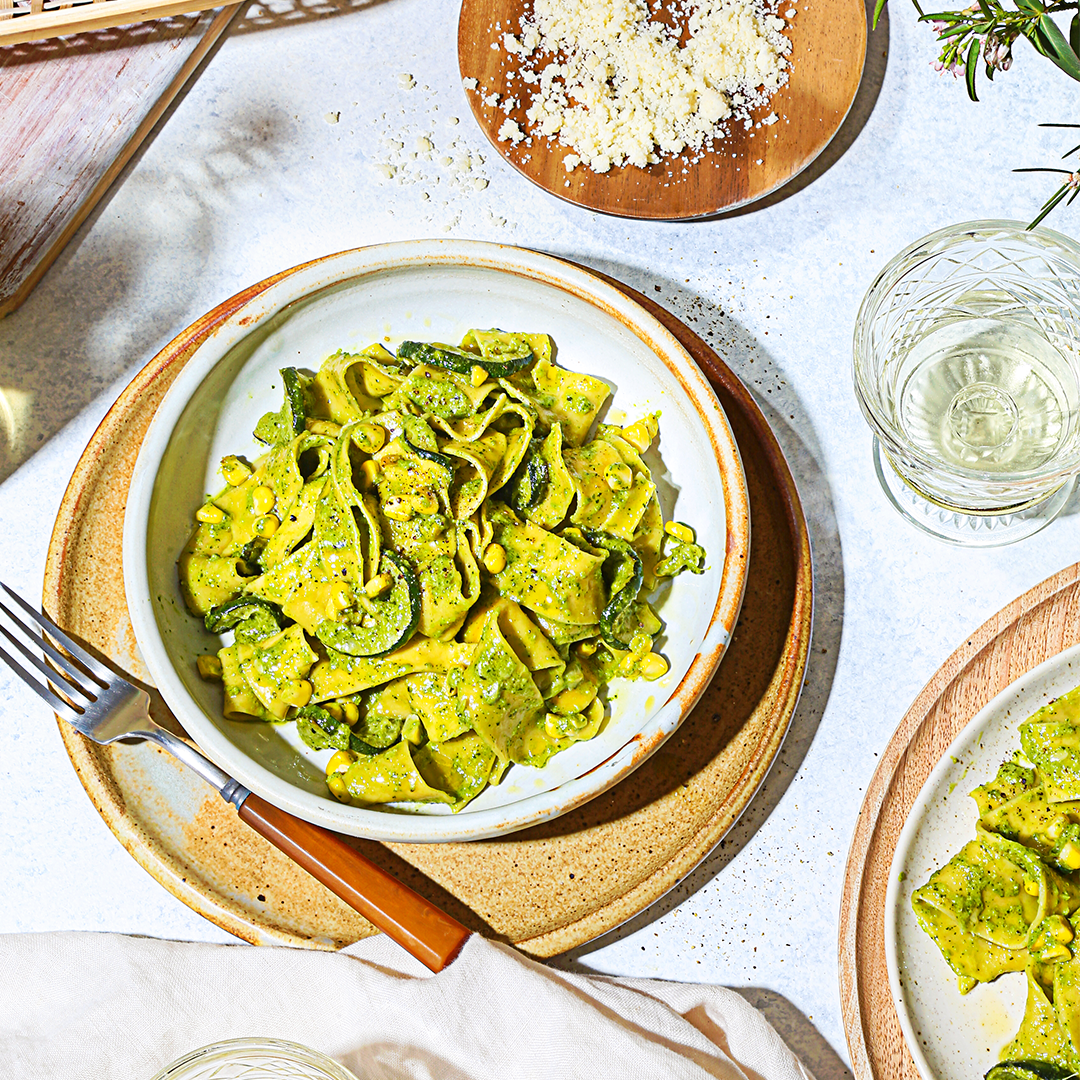

Try using whole garlic cloves in this Zesty Jalapeño Pesto Pasta with Zucchini and Corn or try using whole garlic cloves in these Crispy Curry Chicken Thighs with Roasted Beets.
Get your fresh produce delivered with Misfits Market